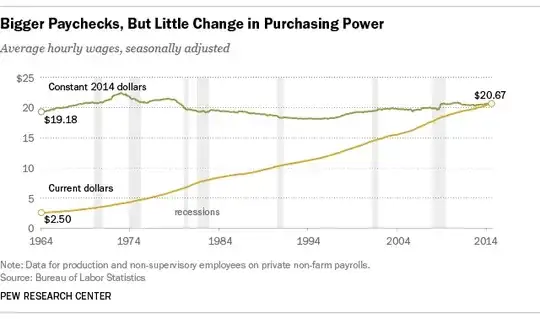Over the past few weeks, it has become a common talking point at either major party's convention to talk about the lack of movement in USA citizens' wages since approximately the middle of the 1970s. For example, in Representative Joseph Kennedy III's introduction of Elizabeth Warren at the DNC: https://www.youtube.com/watch?v=CWmRPRg8cEA
[Elizabeth Warren] taught us that impact lay not in classrooms or textbooks, but in a society where wages have not budged in 40 years.
Warren herself repeated a similar claim in her speech, albeit within a mentioned time frame: https://youtu.be/f1N2KurzQsU?t=3m51s
I mean look around — Americans bust their tails, some working two or three jobs, but wages stay flat.
